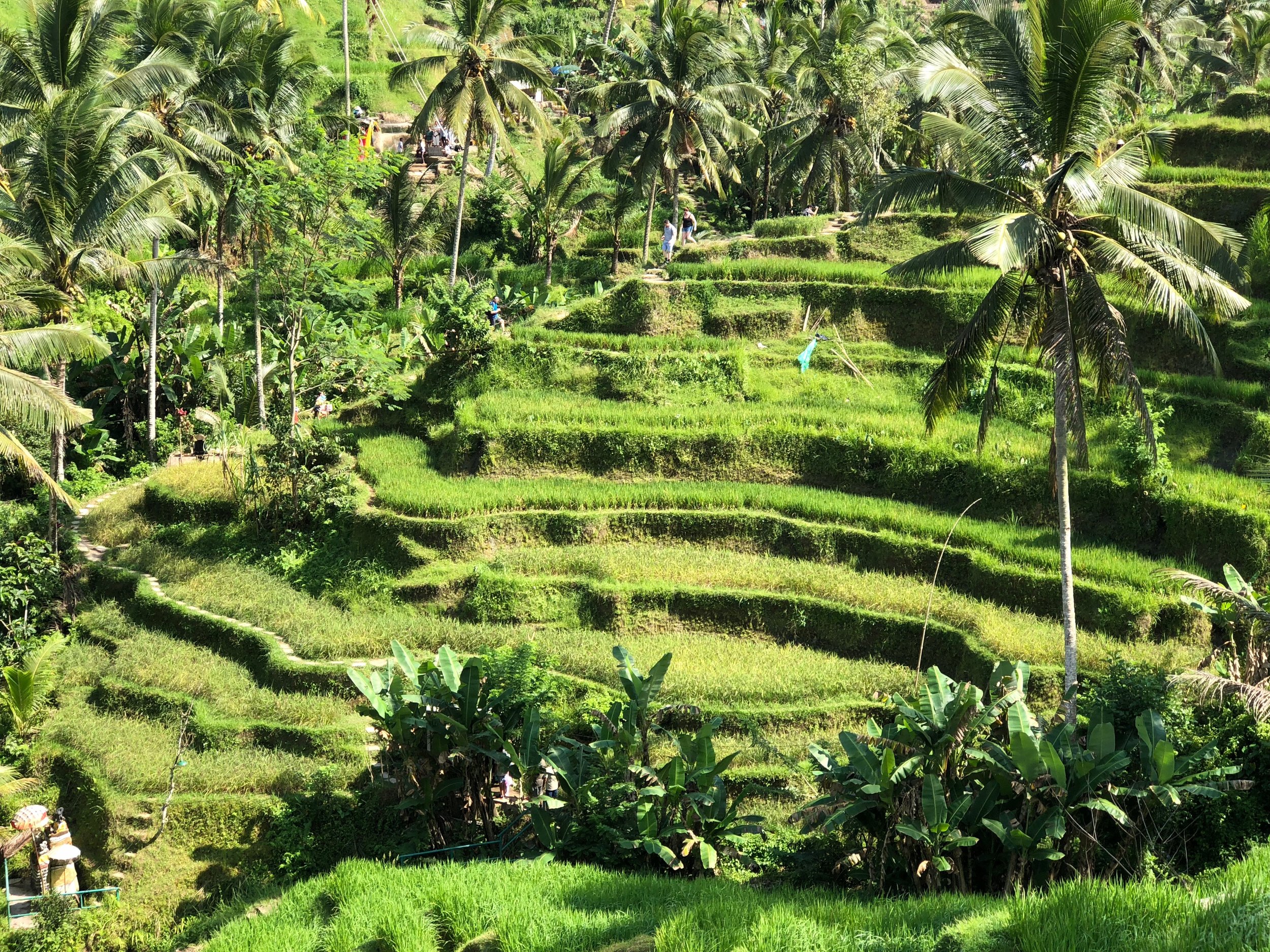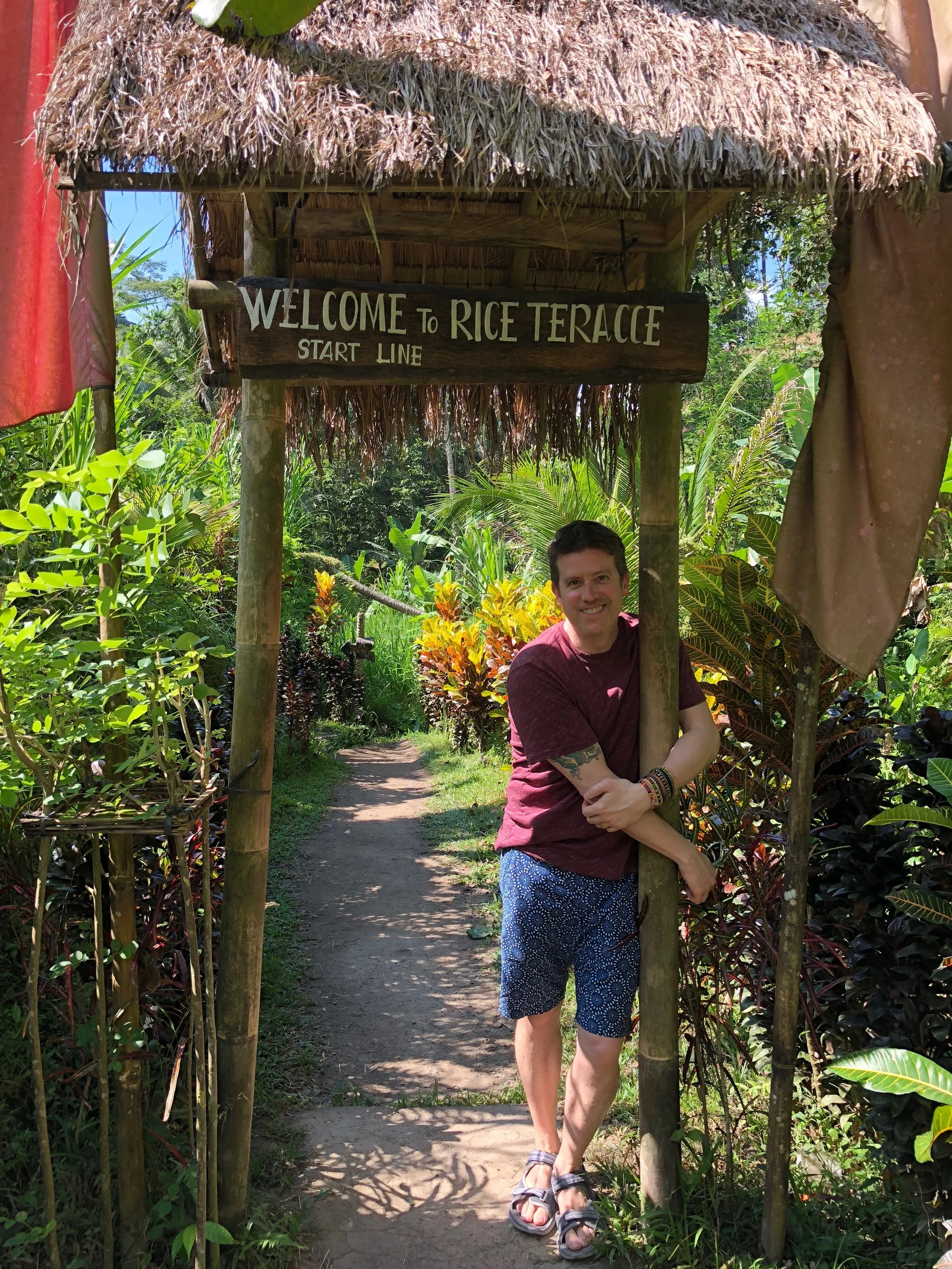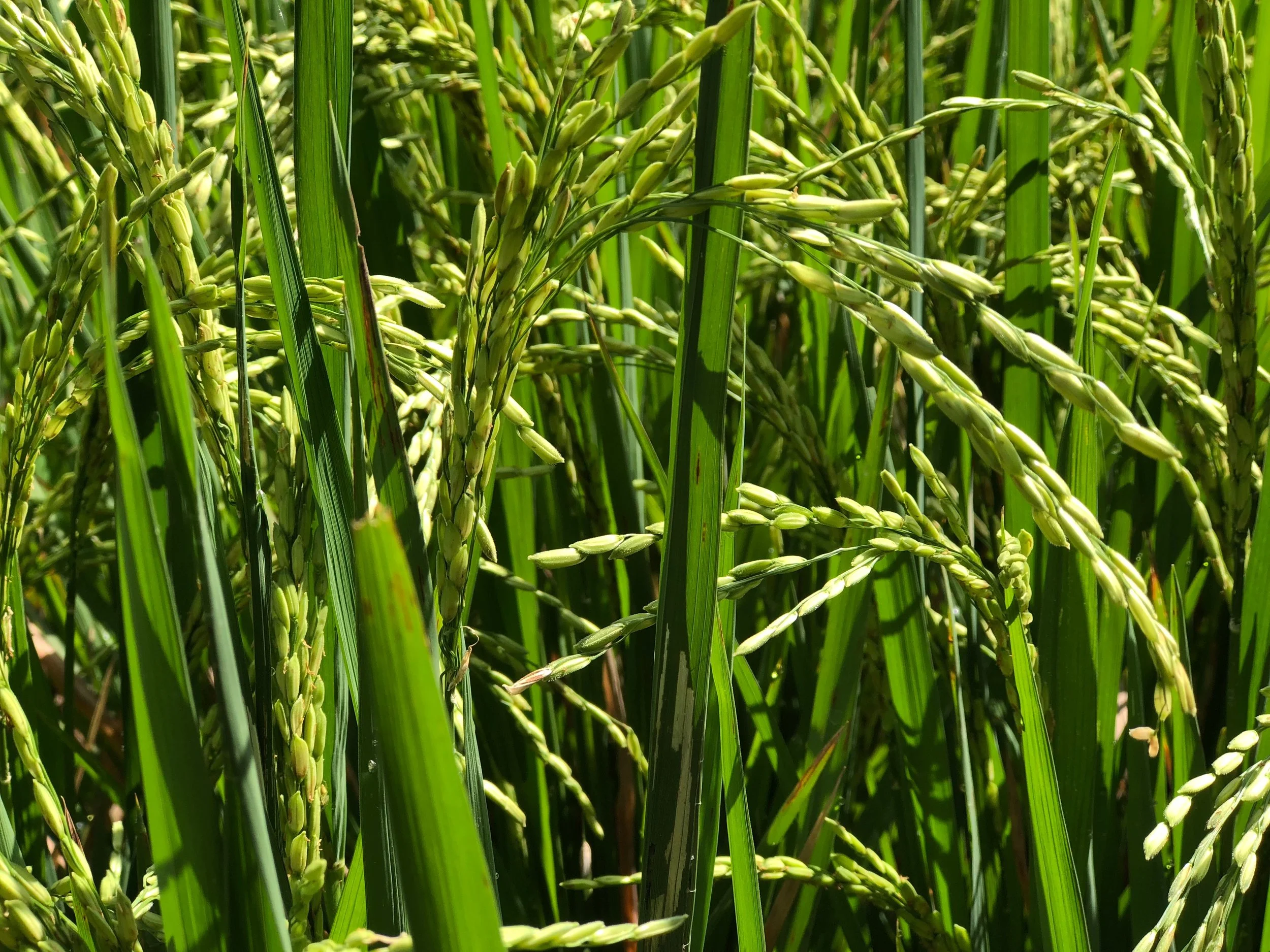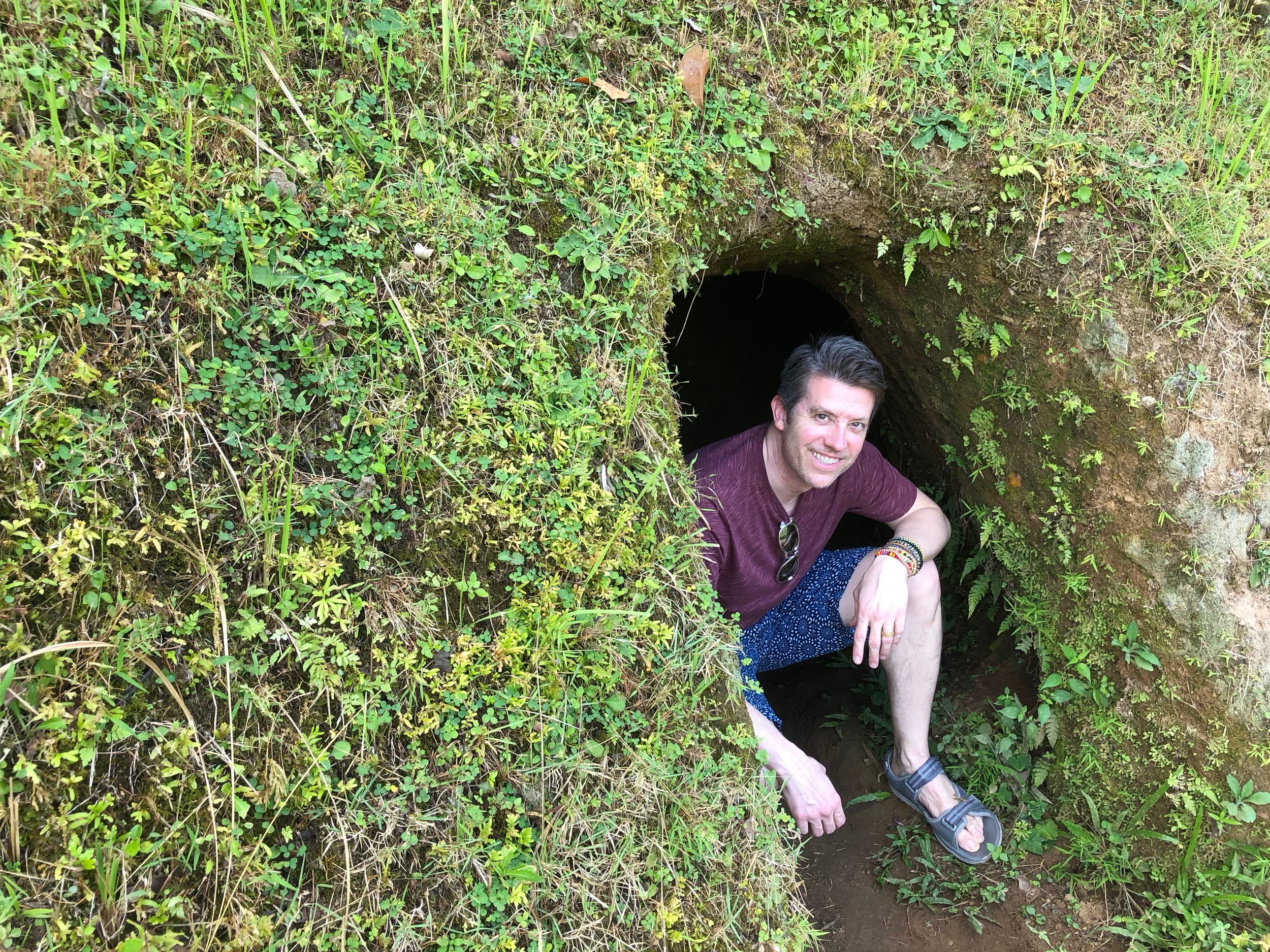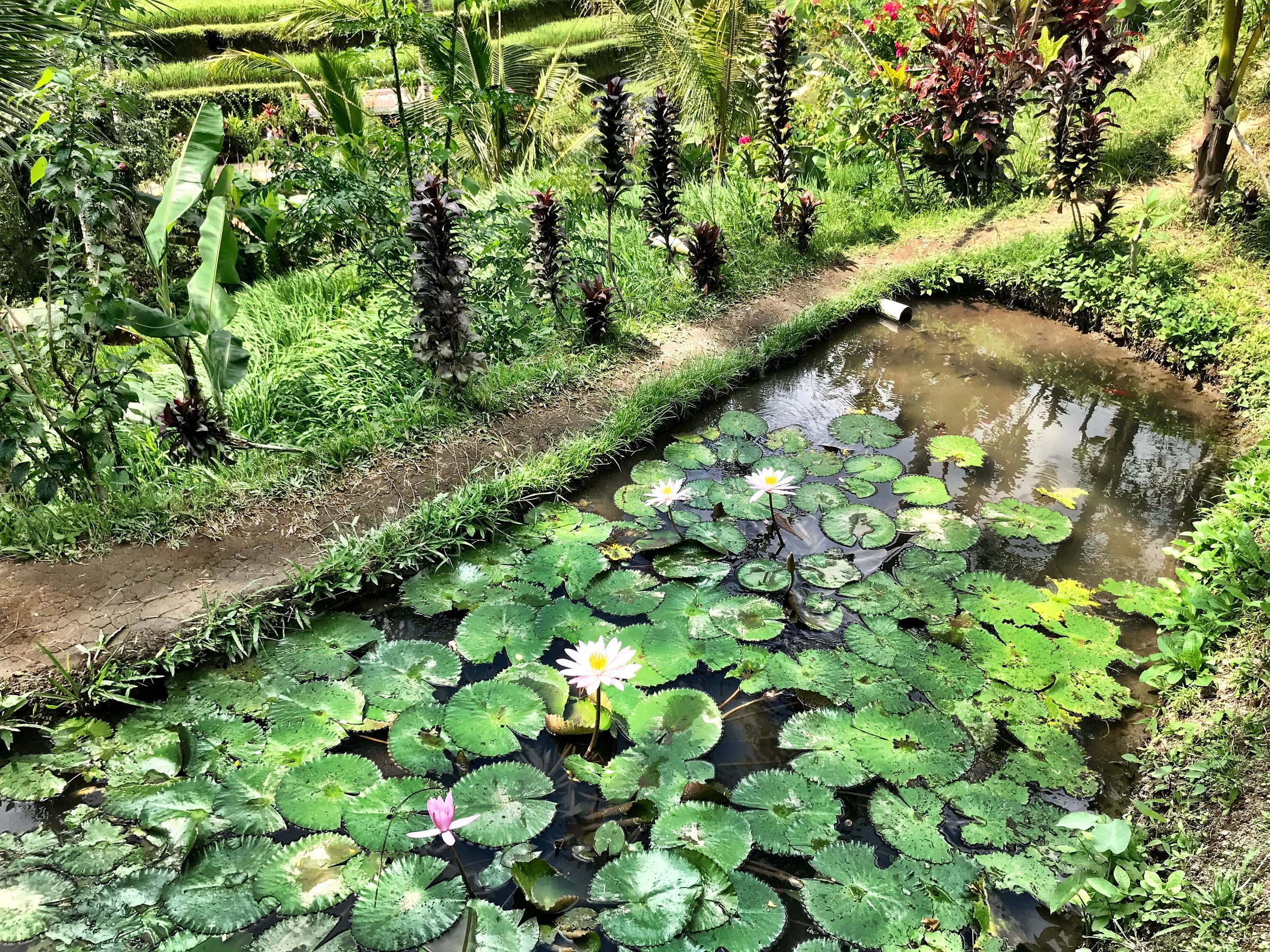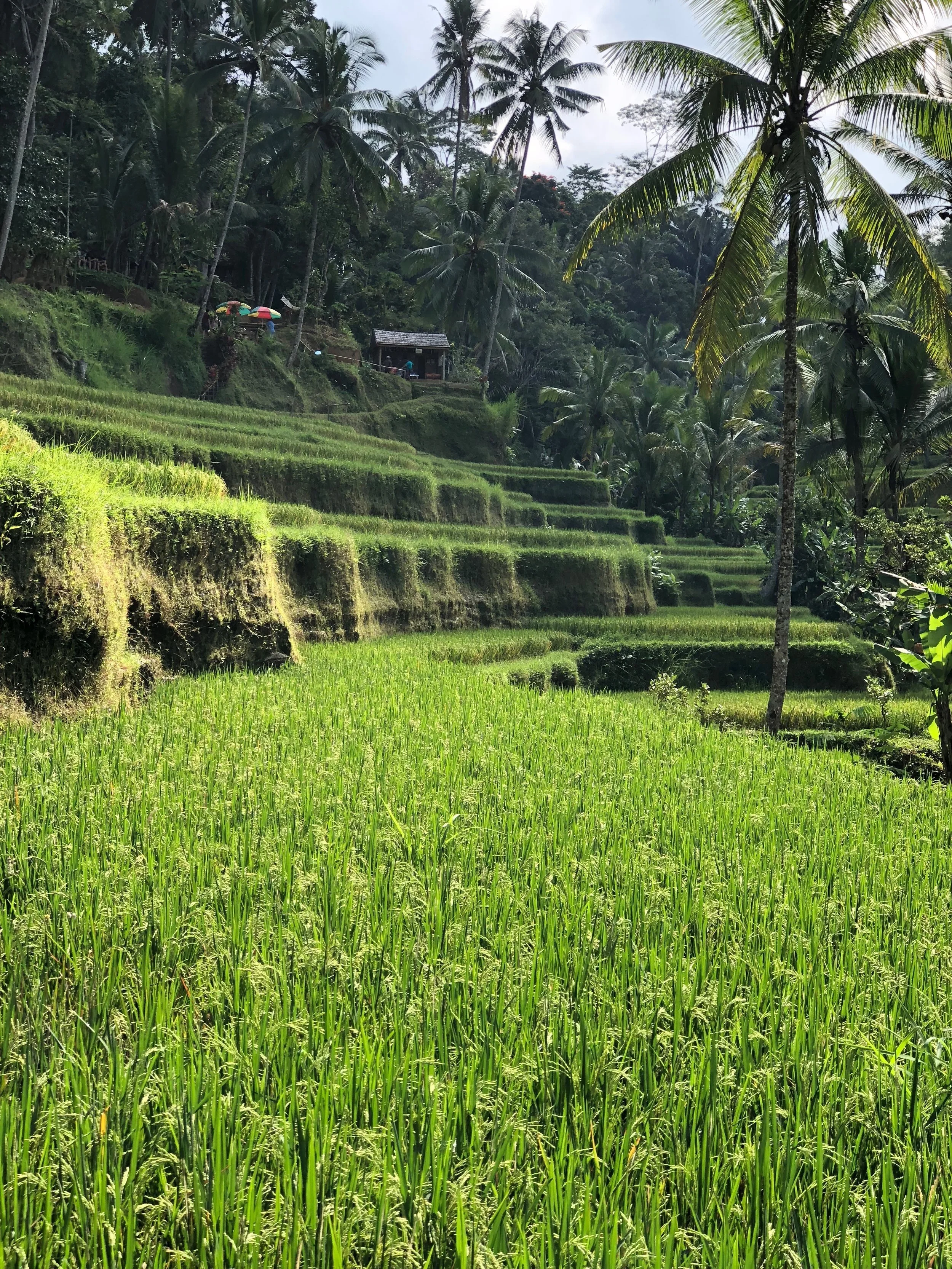Your photos of these gorgeous rice terraces will make your friends green with envy.
If you’re in the Ubud area, make a stop at the Tegallalang Rice Terrance
Chances are if you’ve ever done an Instagram or Pinterest search and entered the keyword “Bali,” you’ve seen more than a few images of the terraced rice paddies of Tegallalang and tourists posing beneath the multicolored Love Bali sign.
This highly photogenic and popular tourist destination is located about 30 minutes north of Ubud.
“We gazed out, awestruck by the sea of emerald green terraces whose sinuous lines follow the contours of the hillside.”
Get there as early as possible to avoid the crowds and the heat of the day
Wally and I hired a driver and left from our hotel early enough in the morning to (hopefully) avoid the throngs of tourists. When we arrived at the large parking lot, we were not entirely surprised that it was already beginning to fill up. I was confused at first if we were in the right place, as there are large printed banners for Ceking Rice Field. I later learned that this is the name of the village where Tegallalang is situated.
Duke enjoying the beautiful setting
Wally’s excited for the adventure to begin!
Even though you can’t see them, there are paths to follow through the rice paddies
It’s amazing to think that this rice is gathered by hand
Rice Rice Baby
Rice is a staple food for the Balinese, reflected in the endless regional variations of nasi goreng, and a small amount often appears in traditional woven palm leaf offerings. Cultivation adheres to a well-organized cycle initiated by ritual observance at water temples — the nearby Gunung Kawi Sebatu temple is dedicated to Dewi Sri, the goddess of rice and fertility.
Bali’s tropical climate allows for rice to be grown year round, and the terraces of Tegallalang were lush and green on our visit in late April. It’s humbling to learn that the harvesting process is done completely by hand. The sheaves are thrashed in bunches to release the grains, which are then washed and laid out in the sun to dry.
The undulating green hills are iconic of Bali
It Takes a Village
As consumers, when we think of rice, we may only see it as a pre-packaged commodity to be purchased off the shelves of a grocery store. We don’t imagine how it came to be there — namely, the result of a sophisticated agrarian community dating back to the 8th century, whose shared labor, known as subak, encourages farmers to work together to preserve the traditional egalitarian irrigation system passed on from generation to generation. This practice follows the Balinese philosophy Tri Hita Karana, in which humans, spirits and nature are intertwined in a harmonious, mutually beneficial relationship.
Wally and I paid a donation fee of 10,000 rupiah each (about $1) to enter. Standing at the top of hill, we gazed out, awestruck by the sea of emerald green terraces whose sinuous lines follow the contours of the hillside.
Wally saw a small cave and crawled through it until he came out this end
There were a few other tourists captured in our photographs, but it didn’t bother us and added scale and color to our images. We hiked down mud steps to the valley floor and walked up the other side, meandering the narrow footpaths that cut through the paddies.
To prevent birds from eating the grain laden stalks, farmers have employed an ingenious technique using bamboo poles and strings. One version creates horizontal movement when the string is tugged and another activates a set of empty aluminum cans that loudly rattle.
A lotus pond we stumbled upon
You’ll marvel at the sheer scale of what you’re seeing
50 Shades of Green
We spent a little over an hour wandering through the terraces and footpaths. Make sure to bring comfortable footwear, suitable for moderate trekking, bug repellent, sunscreen and bottled water, as the landscape is fairly exposed and open.
At one point, we were at the far end of the valley and couldn’t find our way out. Instead of following a group of equally baffled tourists, we backtracked past the swings, where you can swoop out over the terraces for that perfect Instagram photo or video. I refused to do this, as it seemed like something only basic bitches would do. Wally argued that it’s a requisite shot for all the influencers, so I told him he could take one if he wanted.
These stepped terraces are a marvel of ancient engineering
There’s no clear way to go, and we had to backtrack to find our way out
Atop one hill, a hen and her chicks toddled around
We went back down the valley and took a different fork in the road, eventually ending up on the other side by the road we had originally come from, passing hikers going in the opposite direction.
There are small shops selling I ♥ Bali tote bags, clothing, cold drinks, coffee luwak (which is basically green coffee beans that have been partially digested and defecated by a mongoose) and other assorted souvenir fare along the way. We picked up a couple of Bintang Radler, but we’re still kicking ourselves that we didn’t purchase one of the ubiquitous penis-shaped bottle openers we saw here and in Ubud. They’re available in various sizes, have a set of balls and come in light or dark wood.
Tegallalang has much to offer, though some travelers visit Jatiluwih instead
Why We Chose Tegallalang
Prior to adding the rice terrace to our itinerary, I had weighed the pros and cons of Tegallalang and Jatiluwih. Jatiluwih, although recognized as an UNESCO World Heritage Site, was over an hour from Ubud and a bit problematic when plotting out an efficient route using Google Maps that included the other places we wanted to visit.
Wally’s never met a hammock he didn’t try out
I understood that Tegallalang would very likely be more touristy and read reviews where some people had negative experiences and had felt like they were perpetually being asked for donations as they wandered through the paddies. This was not something we encountered, but after learning more about the cooperative subak system, it does make sense, as these are working fields and there’s a lot of creativity and hard work that goes into maintaining the terraces. My advice is to carry a few small bills with you in case a farmer requests payment if you want to take photos and try your best to stay on the designated pathways.
Even though our time in Bali was all too brief, I’m grateful we were able to check Tegallalang off our list. And in case you’re curious, Wally didn’t end up doing the swing by the Love Bali sign — he took one look at the dropoff and his vertigo prevented this from happening. –Duke
Tegallalang Rice Terrace
Jalan Raya Tegallalang
Tegallalang
Kabupaten Gianyar
Bali 8056
Indonesia


